Install FME Server
Perform the following steps on all machines you have allocated for your fault tolerant architecture.
- Start the FME Server Installer.
- On the Choose Setup Type dialog, select the Distributed/Fault Tolerant install option.
- On the Custom Setup dialog, select FME Server Core Components, FME Engine, and Web Services. (Optionally, select Console. For more information, see FME Server Console.)
- On the Destination Folder dialog, specify the installation directory for FME Server.
- On the User Account page, specify the Windows user account that will run the FME Server System Services. This account must have:
- Access to the FME Server System Share that you specify in the next dialog. The System Share is the location where FME Server stores Repositories and Resources files. It must be accessible by all machines that comprise the FME Server deployment. (For more information, see Provide a Remote File System for the FME Server System Share.)
- "Log on as a service" rights on this machine. For more information, see this Microsoft Docs article.
- On the FME Server System Share dialog, specify a shared directory visible to all machines that make up the FME Server. This directory stores FME Server System Share files, which include Repositories and Resources. If this is a Linux installation, specify the mounted directory. For more information, see Provide a Remote File System for the FME Server System Share.
- On the FME Server Hostname dialog, specify the name of the machine hosting this installation of FME Server.
- On the Administrator Account dialog, enter a user name and password for the admin account. This account provides full access to FME Server, and is the starting point for configuring other user accounts following installation. For more information, see Default User Accounts and Passwords.
- On the Database Server Type dialog, specify the type of database for the FME Server Database. For more information, see Provide a Database Server.
- On the Database Server Parameters dialog, specify the connection parameters for the FME Server Database.
- On the Web Application Server dialog, specify the FME Server Web Application Server.
- On the Web Application Server Port dialog, specify the port to use for communication with the Web Application Server. Port 80 is the recommended default. If this port is in use, port 8080 is recommended.
- Follow the remaining dialogs to complete the installation.



Note: The FME Server Database service always runs under the local system account.
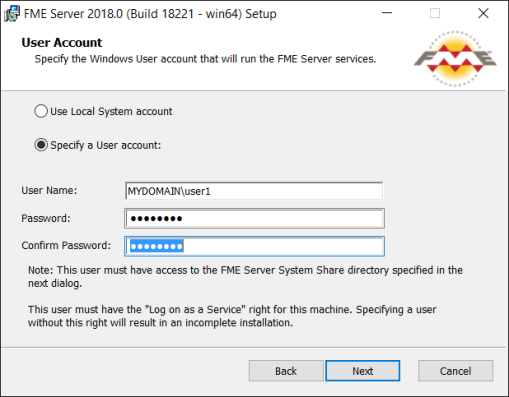
Note: If you are upgrading to a newer version of FME Server, ensure the specified directory is empty of files from the previous installation. Otherwise, conflicts may occur that can produce unexpected results in performance.

Note: Do not specify "localhost".
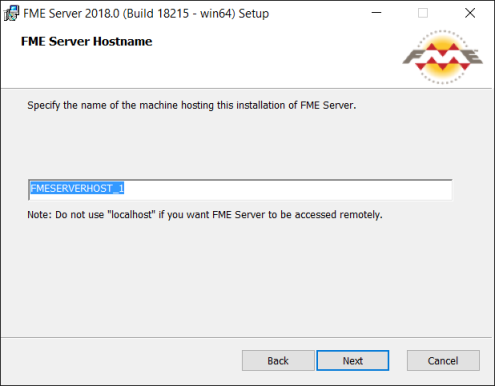
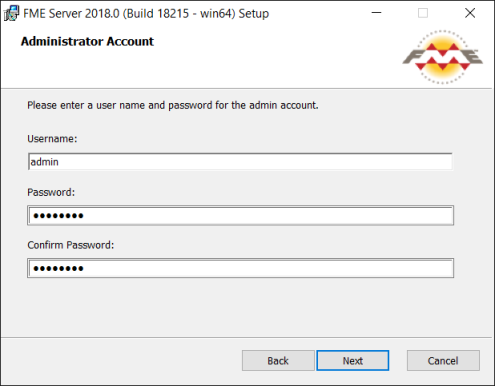
Note: Do not specify the "FME Server Database".


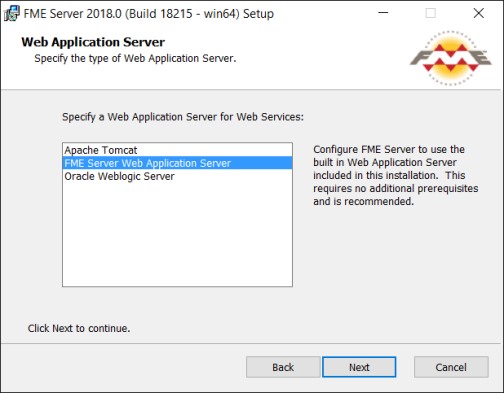
Note: Common applications that may be using port 80 include Skype and Internet Information Services (IIS). Either turn off these services, or select a different port, such as 8080.
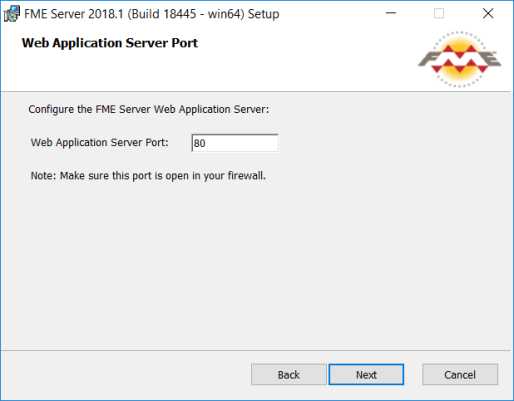
What's Next?